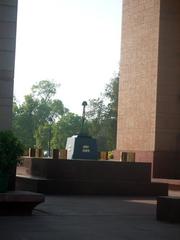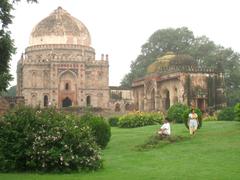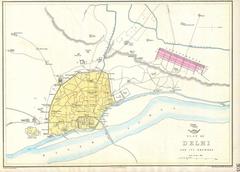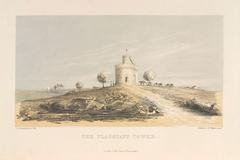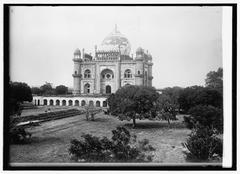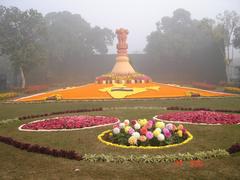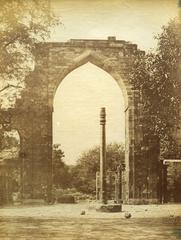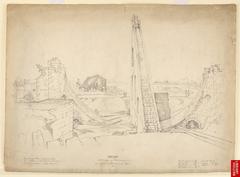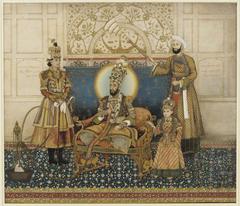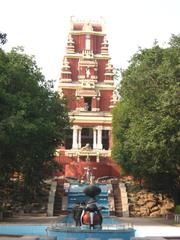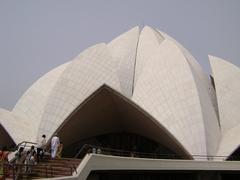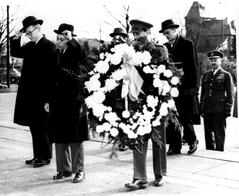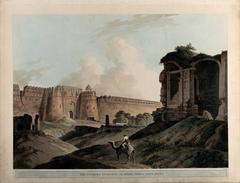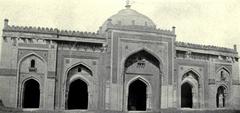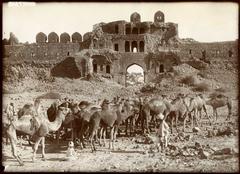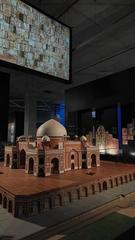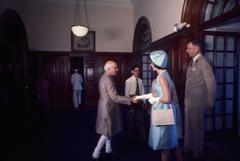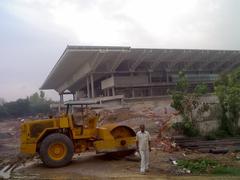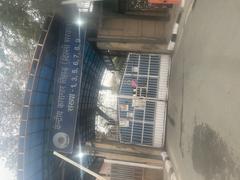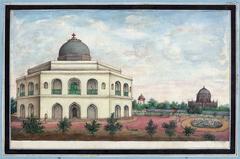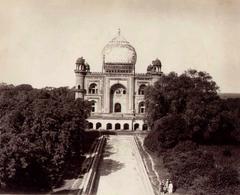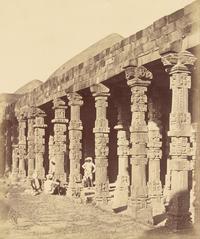Guide to Visiting Hauz Khas Complex, New Delhi, India
Date: 24/07/2024
Introduction
The Hauz Khas Complex in New Delhi, India, stands as a magnificent testament to the architectural brilliance and rich history of the Delhi Sultanate. Situated in the heart of the bustling metropolis, this historical site offers visitors a unique glimpse into the past, spanning from the 13th century to the present day. The name ‘Hauz Khas’ translates to ‘Royal Tank’ in Urdu, reflecting the significance of the large water reservoir that is central to the complex. Constructed during the reign of Alauddin Khilji, the Sultan of Delhi from 1296 to 1316, this reservoir was designed to meet the water needs of the inhabitants of Siri Fort, one of Delhi’s seven ancient cities (Delhi Tourism).
Alauddin Khilji’s efforts did not end with the reservoir; his vision laid the foundation for what would later become a vibrant center of learning and spirituality. However, it was during the reign of Firoz Shah Tughlaq (1351-1388) that the Hauz Khas Complex saw significant architectural additions, including a madrasa, several pavilions, and his own tomb. The intricate stone carvings, domed structures, and the use of red sandstone are characteristic features that showcase the blend of Islamic and Persian architectural styles (Delhi Tourism).
Today, the Hauz Khas Complex is not merely a historical site but also a cultural and social hub. Surrounded by the trendy Hauz Khas Village, the area is a melting pot of ancient heritage and modern urban culture. With an array of art galleries, designer boutiques, cafes, and restaurants, Hauz Khas Village attracts both locals and tourists, making it a must-visit destination for anyone exploring New Delhi (Travelling Camera).
Table of Contents
- History of Hauz Khas Complex
- Visitor Information
- Travel Tips
- Nearby Attractions
- Accessibility
- Cultural and Social Hub
- Artistic Vibes and Urban Chic
- FAQ
- Conclusion
- References
History of Hauz Khas Complex
Origins and Etymology
The Hauz Khas Complex derives its name from the Urdu term “Hauz Khas,” which translates to “Royal Tank.” This name is a direct reference to the large water reservoir that forms the centerpiece of the complex. The reservoir was constructed during the reign of Alauddin Khilji, the Sultan of Delhi from 1296 to 1316, to meet the water needs of the inhabitants of Siri Fort, one of the seven ancient cities of Delhi (Delhi Tourism).
Alauddin Khilji’s Contributions
Alauddin Khilji, a prominent ruler of the Khilji dynasty, played a significant role in the development of the Hauz Khas area. The reservoir, initially known as Hauz-i-Alai, was built to ensure a steady water supply for the residents of Siri Fort. The construction of this reservoir was a monumental task, reflecting the engineering prowess of the era. The reservoir originally spanned an area of approximately 123.6 acres, with a depth of 13.1 feet, capable of holding a substantial amount of water (Delhi Tourism).
Decline and Restoration
Over time, the reservoir fell into disrepair and was neglected until the reign of Firoz Shah Tughlaq, another significant ruler of the Delhi Sultanate. Firoz Shah Tughlaq, who ruled from 1351 to 1388, undertook the task of restoring the reservoir. He not only repaired the water body but also added several architectural elements to the complex, including his own tomb, a madrasa (Islamic seminary), and several pavilions (Delhi Tourism).
Firoz Shah Tughlaq’s Additions
Firoz Shah Tughlaq’s contributions to the Hauz Khas Complex are noteworthy. His tomb, located towards the end of the complex, is a major attraction. The tomb is an architectural marvel, featuring intricate stone carvings and domed structures that reflect the architectural style of the Tughlaq dynasty. The madrasa, built adjacent to the reservoir, served as an important center of learning during the medieval period. It attracted scholars from various parts of the Islamic world, making it a hub of intellectual activity (Delhi Tourism).
Architectural Significance
The Hauz Khas Complex is a testament to the architectural brilliance of the Delhi Sultanate. The structures within the complex, including the tombs, madrasa, and pavilions, showcase a blend of Islamic and Persian architectural styles. The use of red sandstone and intricate stone carvings are characteristic features of the buildings. The domed structures, in particular, are a highlight, reflecting the grandeur and elegance of the era (Delhi Tourism).
The Neeli Masjid and Chor Minar
In addition to the main structures, the Hauz Khas Complex also houses the Neeli Masjid and the Chor Minar. The Neeli Masjid, built during the Khilji dynasty, is a small mosque known for its blue tiles, which give it its name. The Chor Minar, or “Tower of Thieves,” is another intriguing structure within the complex. It is believed that the heads of thieves were displayed on the minar as a deterrent to crime during the Khilji rule (Delhi Tourism).
Visitor Information
Visiting Hours
The Hauz Khas Complex is open to visitors from 10:30 AM to 7:00 PM daily. It is advisable to visit during the early morning or late afternoon to avoid the midday heat and crowds.
Tickets
Entry to the Hauz Khas Complex is free. However, certain events or special exhibitions within the complex may require tickets. It is best to check the official website or local listings for any updates on ticketed events.
Guided Tours
Guided tours are available and highly recommended to fully appreciate the historical and architectural significance of the complex. These tours provide in-depth information and engaging stories about the site’s history.
Travel Tips
- Best Time to Visit: The best time to visit Hauz Khas Complex is during the cooler months from October to March. The weather is pleasant, making it ideal for exploring the historical sites and nearby attractions.
- Dress Comfortably: Wear comfortable walking shoes and lightweight clothing, especially during the summer months. Carry a hat, sunglasses, and sunscreen to protect yourself from the sun.
- Photography: The complex offers numerous photographic spots, from the intricate carvings on the tombs to the serene views of the reservoir. Remember to be respectful and avoid using flash photography in sensitive areas.
Nearby Attractions
Deer Park and Hauz Khas Lake
Adjacent to the Hauz Khas Complex is the expansive Deer Park, also known as A N Jha Deer Park. Named after the social worker Aditya Nath Jha, the park is a serene escape from the city’s hustle and bustle. It is home to a variety of flora and fauna, including spotted deer and peacocks. The park is divided into several sections, including a rose garden, a duck pond, and rabbit enclosures. The Hauz Khas Lake, located within the park, enhances the area’s natural beauty and provides a picturesque setting for leisurely walks and picnics (Delhi Tourism).
Hauz Khas Village
The Hauz Khas Village, which surrounds the historical complex, has undergone significant urbanization since the 1960s. Initially developed by the Delhi Land and Finance (DLF) group, the area saw a major transformation in the mid-1980s with the establishment of designer boutiques, art galleries, and restaurants. This blend of ancient heritage and modern amenities has made Hauz Khas Village a popular destination for both locals and tourists (Delhi Tourism).
Accessibility
The Hauz Khas Complex is accessible by various modes of transportation. The nearest metro station is Hauz Khas Metro Station on the Yellow Line, which is a short rickshaw ride away from the complex. There are also ample parking facilities for those traveling by car.
Cultural and Social Hub
Today, Hauz Khas Village is not just a historical site but also a vibrant cultural and social hub. It hosts a variety of events, performances, and art exhibitions, attracting a diverse audience. The area comes alive in the evenings, with people flocking to its trendy cafes, bars, and restaurants. The juxtaposition of ancient ruins with contemporary urban life creates a unique atmosphere that is both captivating and enriching (Travelling Camera).
Artistic Vibes and Urban Chic
Hauz Khas Village has also become a hub for art and creativity. Its narrow lanes are dotted with eclectic boutiques, art galleries, and trendy cafes that resonate with a bohemian spirit. The vibrant street art and murals add a splash of color to the walls, creating an artsy ambiance that attracts artists, designers, and free spirits. Regular workshops and cultural events, such as pottery and painting sessions, poetry readings, and live performances, further enrich the cultural landscape of the area (Same Day Agra Tour).
FAQ
What are the visiting hours for Hauz Khas Complex?
The Hauz Khas Complex is open from 10:30 AM to 7:00 PM daily.
Is there an entry fee for Hauz Khas Village?
Entry to the Hauz Khas Complex is free, though certain events or special exhibitions may have a ticket fee.
What is the best time to visit Hauz Khas Complex?
The best time to visit is during the cooler months from October to March.
Conclusion
The Hauz Khas Complex, with its rich history and architectural splendor, offers a unique glimpse into Delhi’s past. From the grand reservoir built by Alauddin Khilji to the intricate tomb of Firoz Shah Tughlaq, the complex is a testament to the city’s historical and cultural heritage. The modern developments in Hauz Khas Village, combined with the area’s natural beauty and vibrant social scene, make it a must-visit destination for anyone exploring New Delhi. Whether you are a history enthusiast, a nature lover, or a culture aficionado, Hauz Khas promises an unforgettable experience (Travelling Camera).


